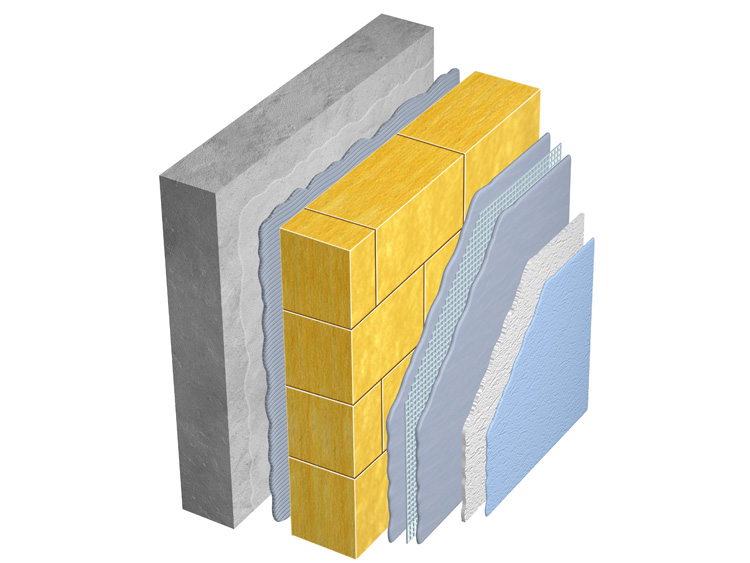Adhesive Mortar
The insulation is bonded to the outer wall with polymer-modified cementitious mortar.

How do igloos keep you warm, actually? The secret lies in the walls: the air pockets trapped in snow are a poor thermal conductor - and an ideal insulating material. This property can also be used in modern insulation methods.
It is not only the Inuit who have been relying on air as an insulating material for many generations. The Ancient Greeks and Romans also knew a thing or two about its insulating effect, building houses from two-shell masonry. In the nineteenth century, the cavities were additionally stuffed with paper or wool. But mineral wool or polystyrene are now the preferred insulating materials. All these methods rely on the same principle: they block thermal transport via air. Air is kept in a confined space - be it in snow, cavity walls or polystyrene spheres. Meanwhile it stays warm inside - or pleasantly cool.
Insulation against Global Warming
In an age of global warming everyone is talking about insulating buildings. In an uninsulated house, up to 40 percent of the heat is lost through the outer walls. A huge energy waste - particularly when you consider that buildings throughout the world consume 40 percent of primary energy and are responsible for 33 percent of CO2 emissions. Effective thermal insulation can prevent this - and save up to 70 percent of heating energy.
Systematic Thermal Insulation
External thermal insulation composite system (ETICS), which are applied to the outside of the wall, have a track record of over 60 years as thermal insulation. They are composite materials, with the particular composition varying according to the type of structure, the climate and other factors.

The insulation is bonded to the outer wall with polymer-modified cementitious mortar.
Besides polystyrene rigid foam panels, mineral wool or wood fiber boards can be used.
Mechanical strength is provided by the polymer-modified cementitious mortar with embedded glassfiber mesh.
This provides high tensile strength and increases the mechanical strength of the system.
The top coating completes the system.
The Mortar Makes the Difference
In external thermal insulation composite systems, the mortar is particularly important. Versatility is what counts: ultimately, every wall is different - depending on where and when it was built, and of what material. At the same time, the required adhesive strength pushes many mortars to their limits. VINNAPAS® polymeric binders from WACKER are the solution. They improve the bonding of the insulating panels to the surface, while improving the flexibility and impact strength.
Water Stays Out
Penetrating water is the arch-enemy of every insulating material. Since, as water displaces air, the material loses its insulating capability. Here, too, WACKER provides the solution: VINNAPAS® H class polymeric binders impart water repellency and prevent rain and damp from penetrating into the insulating material. At the same time, water vapor from the interior is allowed to escape. So nothing more stands in the way of a pleasant interior climate.
WACKER offers a variety of solutions for different applications, climatic zones and substrates. Visit our product section for more details.
Discover our products